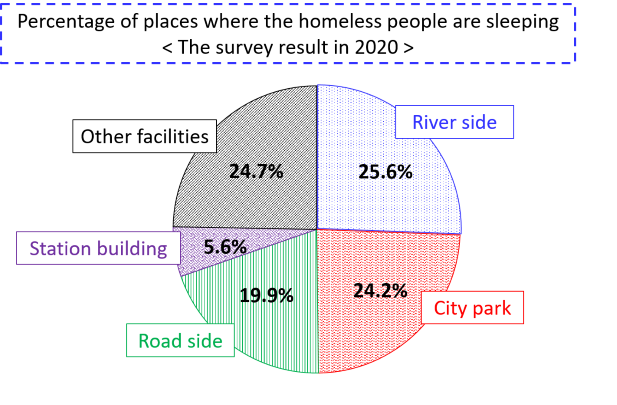Column Finance and the Social Security System 2020.08.17
【Aging, safety net and fiscal crisis in Japan】No.258: The number of homeless people continues to decline
In this column series, Yukihiro Matsuyama, Research Director at CIGS introduces the latest information about aging, safety net and fiscal crisis in Japan with data of international comparison.
In July 2020, the Ministry of Health, Labor and Welfare announced the results of a national survey on homeless people. The government enacted a law in 2002 to support an ordinary and independent life for homeless people, as their growing numbers had become a major social issue. In 2003, the first national survey of homeless people under this law found there to be 25,296 homeless people. Since the second survey in 2007, the Ministry has conducted this survey annually. As shown in Figure 1, the number of homeless people in 2020 is 3,992, an 84% decrease from the 25,296 in 2003. Figure 2 shows the locations where the homeless are sleeping.
Such a large decrease in the number of homeless people is considered a result of the government’s efforts to provide them with employment assistance and welfare measures. However, if economic stagnation is prolonged under the second and third waves of COVID-19, it is feared that a vicious cycle of increases in the number of homeless people and higher unemployment will occur.
Figure 1 The number of homeless people

Source: Ministry of Health, Labor and Welfare
Figure 2 Places where homeless people are sleeping

Source: Ministry of Health, Labor and Welfare
